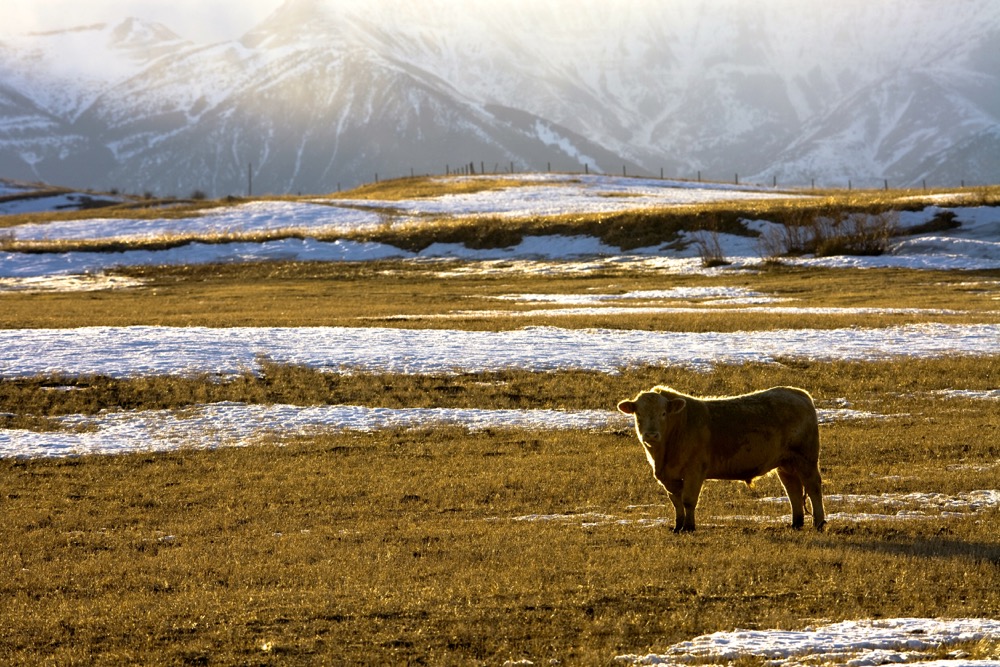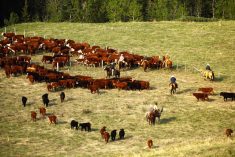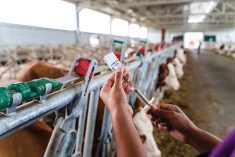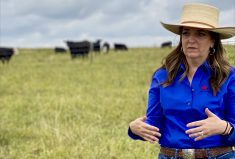The measures used to battle bovine tuberculosis are tough, but well worth it, says one of the vets in the line of defence.

“Most of our focus is that it is a reportable disease and TB-free status is jealously guarded as a trade advantage to Canada,” Allan Preston, Manitoba’s bovine TB co-ordinator, said during a recent Beef Cattle Research Council webinar.
In other parts of the world, bovine TB has a major economic impact, as the disease not only kills cattle but limits production. And although transmission to humans is rare, the results can be fatal.
- Read more: The lowdown on bovine tuberculosis
“As recently as a couple of years ago, a slaughterhouse worker in the U.K. died from contracting bovine TB on the kill floor,” said Preston, who operates a grain and cattle farm in southwestern Manitoba.
Read Also
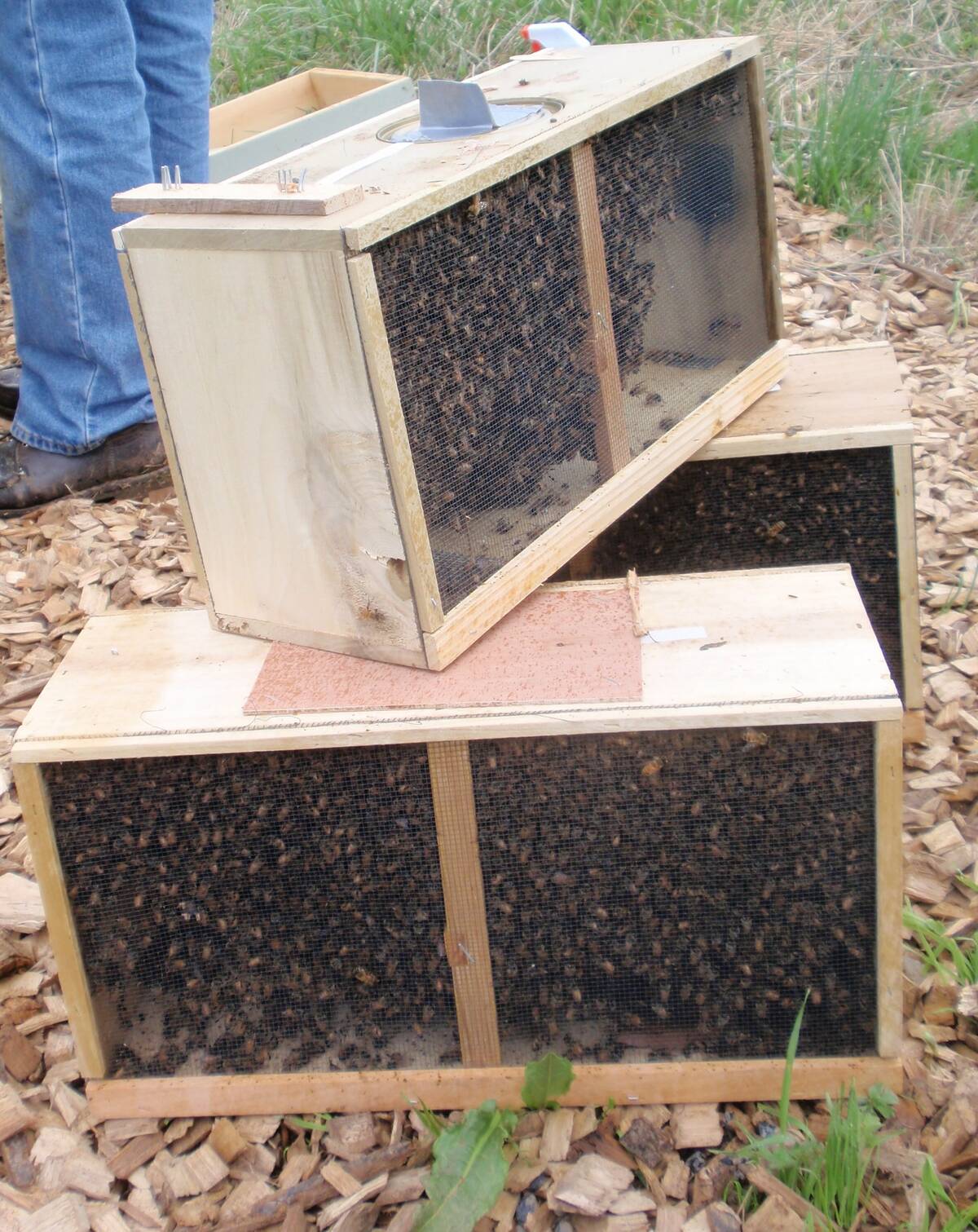
Canadian beekeepers call for regulatory accountability
Beekeepers say the Canadian Food Inspection Agency should restore U.S. packaged bee shipments, claiming the agency isn’t following evidence.
“We never want to forget that this disease does have those public health implications.”
Worldwide, 1.5 million to two million die from the human form of the disease each year.
“We tend to forget that this ancient disease is with us all the time and creating some problems,” he said.
While the disease used to be prevalent in Canada, the surveillance and eradication programs keep the infection numbers low.
“In 2017, the prevalence is so low that we can barely register it,” said Preston. “We’ve come a tremendously long way, but it’s been a bit of a painful journey for sure.”
Globally, 50 million cattle are infected with the disease.
“The economic losses are staggering in terms of the dollars this costs the cattle industry worldwide.”
In turn, Canada and the United States gain immense economic benefits from their control programs, estimated at savings of $10 million annually.
“That’s pretty important,” said Preston. “It’s also important that we still have issues in Canada, North America and worldwide.”
The tuberculosis issue is further complicated in areas where there is a wildlife reservoir for the disease, such as Riding Mountain National Park in Manitoba and Wood Buffalo National Park in Alberta. Elk, white-tailed deer, and bison can spread the disease. But while there has been transmission from bison in Wood Buffalo National Park to cattle the current situation in southeastern Alberta is not believed to have been the result of transmission from wildlife.
“It’s important to recognize that these situations are unique and challenging,” said Preston. “Based on the work we’ve done in Manitoba, we think that over the next four to five years, we can get to the point where we can eradicate tuberculosis from the wild population. If we can do that, that’s one of the first times that’s happening all over the world.”
Traceability and premise identification are key to finding and tracking tuberculosis cases. In Manitoba, about 50 to 60 per cent of producers have a premise ID, and that number climbs to 75 to 80 per cent in Alberta.
“This just indicates that the premise ID, animal identification and movement information are not as robust as they could be in the present time,” said Preston. “We need to continue to work towards that.
“Certainly, any investigation in the TB situation in Alberta at the moment, or the BSE tracebacks we’ve had in recent times, would certainly be more efficient and simpler if the traceability system was a little more robust and closer to being complete.”
In addition to slaughter surveillance, bovine TB screening also occurs through selected testing, export testing, semen embryo collection programs, and producer-initiated testing.
Biosecurity
To reduce the risk of TB transmission, it’s best to maintain a closed herd and only accept animals of equivalent status. Producers can also employ an incoming isolation and quarantine process.
“From a TB perspective, commingling on pasture is not a huge issue or a huge risk,” added Preston. “Transmission is more likely to occur when animals are confined or feeding off the same feed supplies.”
But separation from wildlife is key.
In Manitoba, white-tailed deer sometimes commingle with cattle, and create problems when they drink from the same water and eat from the same bales. In the Riding Mountain Eradication Area, producers use measures such as a hay barrier fencing around the park. They also move their hay in quickly, and keep it in bins to keep wildlife out. Some producers have used feed yard fencing and others employ guardian dogs. Good gates and fencing have also played a role while improving the habitat within the park encourages the elk to stay within the park’s boundaries.
“Keeping the elk down to a more manageable number has been critical to the spread of the disease,” said Preston.
It’s often overlooked, but producers should have signage and a visitor log-in on their premises so they know who is coming and going on the farm, he added.
Buffer zones between the livestock and the park have also played a role in control.
“I envy the situation that Wood Buffalo National Park has — there are large expanses of land between the buffalo area and where the domestic livestock populations exist,” said Preston. “We don’t have the luxury of that separation in Manitoba, and it has complicated our ability to deal with this disease.”


